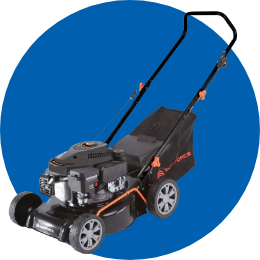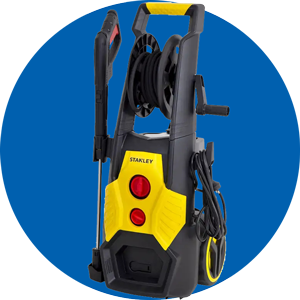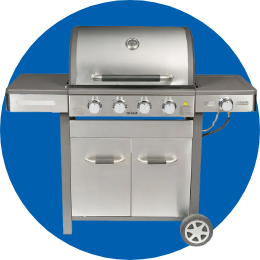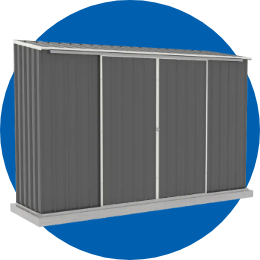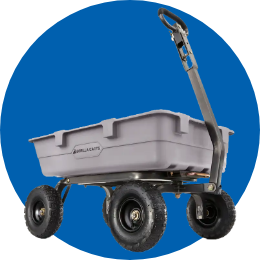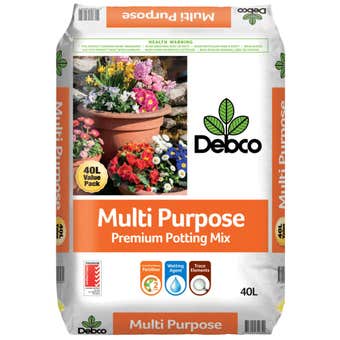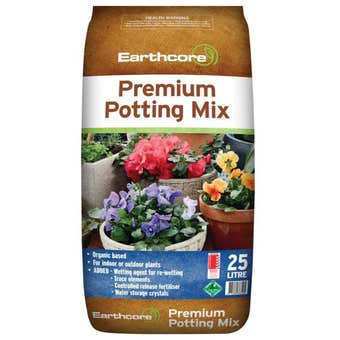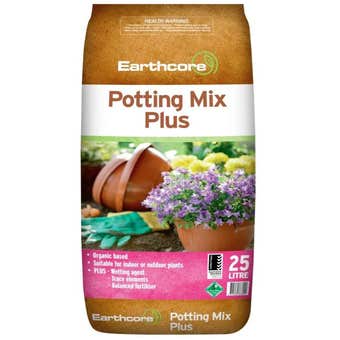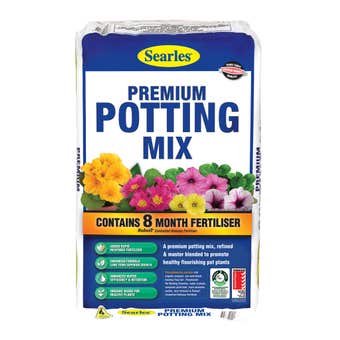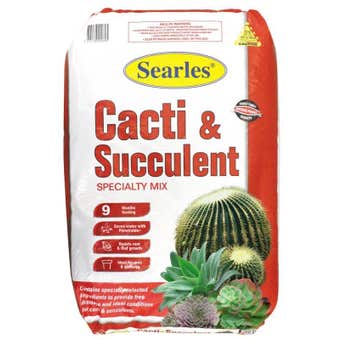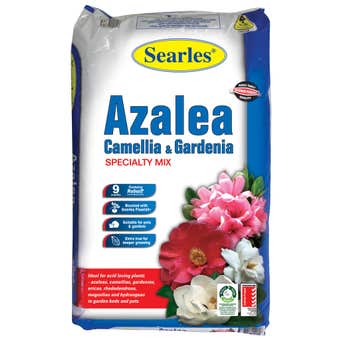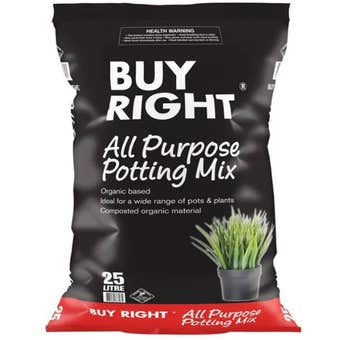- 16 December 2023
How to grow your own herbs


Master the art of herb gardening
Learn how to grow herbs in your own garden, transforming any space into a vibrant and aromatic haven. Whether you're an experienced gardener or a beginner, this guide will provide you with all the essentials for successful herb growing.
Your herb garden should, at the very least, receive 6 hours of sun a day. Full sun is best for most herbs, but check the plant labels when purchasing, as there are some varieties that will grow successfully in partial shade. When setting your herb patch, choose an area that is well-drained (not an area of the garden where the soil holds water or that is at the bottom of the slope). If the only spot you have that is suitable doesn’t have good quality soil, you can easily build the bed up with sleepers, rocks or bricks. That way, you can add more soil and compost, improving the soil’s friability and drainage at the same time. When digging the existing soil over to remove weeds, add some pelletised poultry manure to enrich nutrient levels in the soil before planting.
When planting out your herbs, leave adequate space between them for future growth. Check labels for height and width so you can space and position appropriately. Taller growing herbs should be placed at the rear of the area so as not to shade out smaller herbs as they grow.
Many herbs have decorative foliage and flowers, so why not treat the area as a decorative garden bed and plant it out accordingly, rather than just planting one of everything. You could plant attractive drifts or groups of the one herb in the bed, then add a hedge of herbs, like rosemary. In the foreground, as a border planting golden or green oregano looks wonderful. Try mixing in a few flowers for looks as well as edible petals, like nasturtiums and calendulas.
No room for a specific herb garden? Try planting herbs amongst your other plants. So long as they are in a sunny position and they are planted with non-invasive, smaller plants, your herbs won’t mind at all. Keep them well-fed and watered though as herbs are fast and furious growers and do best when they receive adequate watering, mulch and a light feed every now and again. Poultry manure is great, the pelletised forms (like Dynamic Lifter) have a slow-release, sustained feeding action which is ideal for herbs. While most herbs are really hardy and don’t need this extra attention to grow, during the warmer months you can feed them every month or so with a liquid feed to provide optimum vigour and health.
Understanding herb varieties for your garden
Annual vs. Perennial herbs
Annual herbs
Annual herbs are those that complete their life cycle within one growing season. They grow from seed, produce leaves, flower, set seed, and then die, all within a year. These herbs often require replanting each year, but they usually grow quickly and can provide a rapid harvest.
Examples of annual herbs include basil, cilantro, and dill. Gardeners often plant annual herbs in succession throughout the growing season to ensure a continuous supply. Since these herbs tend to have a more intense life cycle, they might need more attention in terms of watering and fertilising to maximise their growth potential.
Perennial herbs
On the other hand, perennial herbs live for more than two years. They grow and spread over multiple seasons, often becoming more robust and flavorful as they mature. These herbs typically have a dormant period during the colder months but will return in the spring.
Examples of perennial herbs include rosemary, thyme, and mint. These herbs are excellent for gardeners who want a more sustainable and long-term approach to herb gardening. They require initial care and establishment but become more low-maintenance as they mature. Additionally, perennials often offer a variety of uses beyond the kitchen, such as in ornamental landscaping or as natural pest repellents.
Planning your herb garden
Understanding the differences between annual and perennial herbs is crucial when planning your herb garden. Consider the space, resources, and time you have available. Annual herbs provide quick rewards but require replanting, while perennials offer a long-term investment in your garden.
A mix of both types can provide a year-round supply of herbs, with perennials forming the backbone of the garden and annuals adding variety each season. When planning, also consider the climate and how it may affect the growth cycle of your chosen herbs. In cooler climates, some perennials might need protection or may be grown as annuals.
The best herbs to grow in kitchens
Discover the best herbs to grow in your garden. From sun-loving basil to shade-tolerant parsley, this section provides detailed insights into selecting herbs that will thrive in your specific conditions.
- Basil: A favourite in Italian cuisine, basil thrives in warm conditions. It's perfect for adding to pasta dishes, pizzas, and salads. Basil needs plenty of sunlight and regular watering.
- Parsley: There are two main types - flat-leaf and curly. Parsley is a versatile herb used in a variety of dishes. It prefers cooler temperatures and can be grown in both sun and partial shade.
- Coriander: Also known as cilantro, it's essential in Asian and Mexican cuisines. It prefers a sunny spot and well-drained soil. Coriander can bolt (flower and set seed) quickly, so regular harvesting is important.
- Mint: With many varieties, mint is great in drinks, salads, and Middle Eastern dishes. It's a vigorous grower, so it's best planted in pots to prevent it from taking over the garden.
- Rosemary: A hardy herb that thrives in full sun and well-drained soil. Rosemary is great with meats and in Italian cooking.
- Thyme: Thyme is a versatile herb used in many cuisines. It grows well in sunny, well-drained conditions and is drought-tolerant once established.
- Oregano: A staple in Greek and Italian cuisines, oregano thrives in full sun and well-drained soil. It's perfect for tomato-based dishes and grilled meats.
- Chives: With a mild onion flavour, chives are great in salads, egg dishes, and as garnishes. They prefer full sun but can tolerate partial shade.
- Sage: Known for its earthy flavour, sage is a key herb in many European cuisines. It requires well-drained soil and plenty of sunshine.
- Lemongrass: Ideal for Asian cuisine, lemongrass needs a sunny position and moist, well-drained soil.
Planting techniques for a flourishing herb garden
Selecting the ideal location for growing herbs
The perfect location for your herbs gets plenty of sunlight—most herbs thrive in at least six hours of direct sunlight daily. However, in hotter climates, some afternoon shade can be beneficial to prevent wilting or burning.
Additionally, consider protection from strong winds, which can dry out herbs quickly. Accessibility is also key; having your herb garden close to your kitchen makes it easier to harvest and use the herbs in your cooking.
Soil preparation and planting essentials
Herbs generally prefer well-draining soil to prevent root rot. Start by loosening the soil and removing any weeds. Enrich the soil with organic compost to provide nutrients.
When planting, dig a hole twice the size of the root ball of your herb plant. Gently place the plant in the hole and fill it with soil, pressing lightly. Water the plant immediately after planting to help establish roots.
Growing herbs in pots: perfect for small spaces
Don’t use tiny pots to grow your herbs in; larger pots are better as they hold more moisture and nutrients for the vigorous roots – and you won’t go as mad in summer trying to stop them drying out! Nearly all herbs grow happily in pots but make sure you use a quality Terracotta and a tub potting mix as poor quality mixes (and solid mixes) will not promote the vigorous tip growth you are aiming for.
There are lots of decorative troughs and planters to choose and you can put more than one herb variety in a pot. Tip: watch out for any herb in the mint family, they are so vigorous that they can swamp out the other plants in your herb planter or garden. It’s best to confine mints to their own pots, restricting their roving nature and giving your other herbs space to grow.
Herbs look great in pots, and if using Terracotta, seal them first with a spray-on Terracotta sealer. When selecting pots for your herb collection, choose pots with varying heights and arrange them in decorative groups. Many of the large bowl style planters are suitable for herbs and look great. “Strawberry pots” or pots with pockets, are a popular choice for herbs be careful, they can grow out quickly and don’t provide much growing room so choose only small growing herbs.
Idea herbs for container gardening
Herbs like basil, chives, parsley, and mint are excellent for container gardening. When selecting herbs for pots, consider their growth habits - some like mint can spread quickly and are best grown alone. Pots with drainage holes are essential to prevent waterlogging.
Potting tips and care for herbs in pots
Choose pots that are large enough to accommodate the root system of your herb and provide room for growth. Use a high-quality potting mix specifically designed for container gardening. Ensure regular watering, as potted herbs can dry out faster than those in the ground. However, avoid overwatering, as this can lead to root diseases.
Essential care for a healthy herb garden
Watering and nourishing your herbs
Watering needs vary among different herbs. Mediterranean herbs like rosemary and thyme prefer drier conditions, while herbs like basil and parsley require more consistent moisture. Use a water-soluble fertiliser every few weeks during the growing season to provide additional nutrients.
Pruning and organic pest control
Regular pruning encourages fuller and bushier growth. Snip off the tips of herbs to promote branching. For pest control, use organic methods such as neem oil or insecticidal soap. Encourage beneficial insects like ladybugs, which feed on common pests like aphids.
Harvesting your herbs
The best way to harvest herbs is often. Taking those fresh looking tips from the herbs is the best way to stimulate new growth. Leafy plants like oregano, basil, thyme, sage all benefit from constant tip pruning or picking. With chives, you can be ruthless, treat them like grass and “mow” them with a pair of scissors to leave a tuft. They’ll thicken and re-grow quickly. Even if you don’t need the herbs, prune and your plants will be better looking bushier plants.
Rinse the herbs and you are ready to use them in your culinary creation. If you are used to using bought dry herbs from jars you’ll find that you can use lots more herbs if they’re fresh.
For e.g: a recipe might suggest 1 tsp of a dried herb or 1 tbs of the fresh equivalent, You’ll notice a freshness and zing in the flavour of your dishes and once you start using fresh herbs, you’ll never go back. With herbs like coriander and mint, make sure you grow plenty though, as many modern, popular recipes like green curries and laksas call for whole cups of fresh herbs at a time!
With some herbs, there is more to use than just leaves. Coriander for example has wonderful roots and seeds. You can harvest and use herb seeds by collecting them in a brown paper bag (tied over the finished flower heads). The roots are also easily harvested by the plant up like a carrot. Wash the root well and chop very finely for a very pungent flavour.
Techniques for harvesting herbs
The best time to harvest most herbs is in the morning after the dew has dried but before the sun is at its hottest. This is when their oils are most concentrated. For leafy herbs, snip off the top few inches. Always leave enough foliage for the plant to continue growing.
Preserving herbs
Drying and freezing are effective methods for preserving herbs.
- For drying, hang bunches of herbs upside down in a warm, dry place with good air circulation.
- To freeze, chop the herbs and place them in an ice cube tray covered with water or olive oil, then transfer the frozen cubes to a freezer bag.
Storing Herbs
Extra herbs can be dried on cake cooling racks in a warm spot in the house. When dry, store in airtight jars. You can also store herbs easily in the freezer – just rinse, shake off excess water, and pop into cling film or glass jar. Some people also put fresh herbs into an ice cube trays with little water and then pop the desired amount into soups, casseroles or curries as required. Try mint frozen in ice-blocks for your fruit punch this summer.
Troubleshooting in herb gardening
Managing common herb garden issues
Common issues include overwatering, under-watering, and pest infestations. Regularly check the soil moisture and adjust your watering schedule accordingly. Inspect your herbs for signs of pests and treat them early with organic methods.
Pests
There are very few problems associated with the herb garden. Most are very hardy plants that, if grown in full sun, will never have any problems. From time to time you may notice a few aphids or caterpillars that can be pulled or “squirted” off with the hose. There are safe sprays available to use if these methods aren’t effective against your infestation.
Preventing bolting and managing overgrowth
Gardeners often worry that their herbs, particularly coriander, run to seed too quickly or “bolt”. It’s wise to pick herbs often and to try stop them “bolting”, as the flavour of many herbs is not as good once this happens, Try to keep your herbs evenly moist and growing vigorously. In poor, dry or otherwise tough conditions plants are far more likely to run to seed, as they feel a need to reproduce themselves quickly before they die. In some cases, excessive fertilizing can also cause plants to run to seed.
Invasive herbs
As previously mentioned, watch out for creeping, running or vigorous herbs that will take over the garden or planter. The mint family is renowned for becoming rampant so one to it’s own pot is the best idea. Be warned, once they are planted they can be near impossible to get rid of from the garden. Try a large planter, wine barrel or even a bin if you’d like to grow lots of mint without the chance it will take over.
Common herb varieties
Dill
Wonderful with potato and egg dishes. Used in sauces, dill has a slight aniseed flavour. Best grown from seed, directly into the ground, as it often does not transplant well. Approx 90 cm.


Chives
A great all-rounder herb with a mild onion taste that adds flavour to many dishes. Fresh chives make a great herb bread, try mixing with other herbs too. Sensational in omelettes. Approx 40 cm.


Coriander
Now a very popular herb. Pungent flavour, essential for many Asian dishes like soups and curries. Harvest often and replant successively to ensure more continuous cropping. Approx 50 cm.


Mint
Happily grows in shady spots and prefers moist conditions. Available in different flavoured varieties like spearmint, applemint, peppermint. Great for mint sauces, jellies, Asian cuisine and fruit drinks.


Oregano
So easy to grow, it has a distinctive flavour suited to Italian and Spanish dishes. It’s perfect to add to tomato based dishes, but it is also wonderful with roast potatoes and olive oil. Approx 30 cm.


Basil
Grows easily in sun or light shade. A popular herb, the basis for pesto and an addition to many Mediterranean styled dishes. Approx 40cm high.


Parsley
Available in a flat or curly leaf, one of the most popular herbs ever. Easy to grow, it looks great as a border in the herb or veggie patch. Aprox 30 cm tall.


Rosemary
A hardy, perennial, decorative mainstay of any herb collection. The pungent foliage is used in many dishes and is particularly sensational with potatoes. Between 50cm – 1.5m high, depending on variety


Thyme
Wonderful in stuffings, dressings and for roasting with vegetables. Available in different flavours! There’s even one called pizza thyme for flavouring pizzas! Approx 20 cm high.


Sage
An attractive grey foliaged herb. Popular in stuffings and well suited to many pasta sauces. Try pasta with pumpkin, sage and cream sauce. Approx 50cm high.


Mighty Helpful hints for your herb garden
- Your herb garden should, at the very least, receive 6 hours of sun a day.
- When planting out your herbs, leave adequate space between them for future growth.
- Don’t use tiny pots to grow your herbs in. Larger pots are better as they hold more moisture and nutrients.
- Taking fresh-looking tips from the herbs is the best way to stimulate new growth.
- You can store herbs easily in the freezer – just rinse, shake off excess water, and pop into cling film or a glass jar.
- Watch out for creeping, running or vigorous herbs that will take over the garden or planter.


